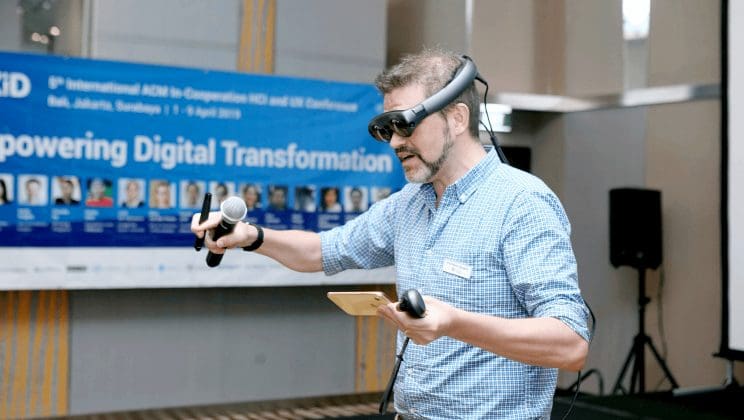Long and turbulent is the way from a startup idea to the first version of a software product launched on the market. But it’s quite possible to make this process as effective and painless as possible, especially if you have a software development partner, a team of experts that will build it for you.
Watch the video and learn our tips that will help you build and launch your product quickly and successfully!
Choice of a software partner is half the job done, while the rest of it lies in development of a well-documented, innovative idea brought by the startup owner. Since it’s hard to predict whether the product will be relevant on the market and popular with users, the first version has minimum functionality which is nevertheless able to solve users’ problems. It’s reasonable and it requires minimal investments, which are decreased even further by handing the project to a single IT outsourcing company that becomes responsible for development, testing, and delivery.
But how is it done? How do efforts of the product owner and the software company join together in creation of the product? Our experience, reflected in this article, will reveal the answers.
What Should And Should Not Be Outsourced
First and foremost, there are several key activities that you won’t have to worry about if you decide to outsource your entire software project to one company:
- Human resources: your software partner handles all related activities, including regular workload and salary
- Rooms and equipment: the same, except non-standard devices for testing, if any will be required
- Project manager: this person is responsible for team management, task distributions, overall control, and product delivery, and is usually provided by the software company along with your dedicated team.
There are several things that should not be outsourced; most naturally, they comprise your startup:
- Vision and Mission: your main business goals
- Product management: determination of main values for users, primary and secondary features
- Sales and marketing: marketing strategy, monetization, promotion, affiliate programs with partners
- Strategy: high-level plan and scenarios of product evolution
There are additional activities that can be outsourced so you can focus on your startup:
- Promotion: customer awareness and brand loyalty
- Accounting: financial transactions, reporting, etc.
- Legal support: data collection, copywriting, official partnership documentation, etc.
Now let us focus on the outsourced activities: the way you are going to interact with your software development partner up to the product launch.
Analysis Of Requirements
This analysis involves you and the remote team communicating closely and regularly, revealing your goals, demands and expectations. This stage comprises feasibility study. Technical experts suggest options of technological stacks for implementation, depending on your budget, deadlines, and business goals. In the progress more suggestions emerge, new issues and features that were not considered previously.
The outcome is project documentation, which forms the vision of the product, its functionality, applied technologies and supported devices. This documentation becomes the basis for UI/UX design estimation, and approximate estimation of the upcoming development. A kickoff meeting is usually conducted at this stage, the scope is finalized, and you can get acquainted with the team that will design your product.
UI/UX Design

This stage is crucial for development. It forms the logic of the entire system and clarifies requirements, replacing the abstract with the concrete. The earlier changes are introduced and approved, the less the eventual software development costs will be. UI/UX design is a precise product specification. Before it starts, project scope is created – the main input information that clarifies what the product owner wants to get, including the vision of the product, its capabilities, description of target audience, and description and understanding of the limitations and resources required to accomplish the task. The document clarifies many important details that might otherwise either get neglected or completely overlooked by the product owner. Along with the requirements clarification, UI/UX design team does design research in order to outline the rough structure of future software, and form a UI/UX design stage estimation.
• Another important part of this stage is designing personas. Persona is a generalized portrait of a certain user category, which is based on research and observation. Personas serve to check whether the product corresponds to its goals. They help test the product and understand how convenient it will be for the target audience. The better we know the audience, the better and faster we design a product that will solve their problems.
• Sketches are created quickly and easily. This iterative exchange of ideas helps find the most advantageous solutions. Research on the target audience and development of the product’s concept are mainly carried out at this stage. A rough logic model is created. The team gets a general understanding of the scope and required resources.
• Then comes wireframing: the full structure of the future product is created iteratively. The future appearance, set of interface elements and product logic are defined here. This is the main design stage which also includes the major part of UX design. At this stage corrections are introduced, and it’s important to determine how the product logic will be implemented.
• The final stage is visualization and branding of the product’s interface elements. The product gains visual individuality. The team gives a full estimate for development, based on the approved UI/UX design and project documentation. It is important to involve a developer at this stage. This person must know how the product is going to work and look in order to estimate its implementation, as well as to suggest the least time-consuming ways of implementation that don’t contradict the main goals and features of the product. The cost of changes becomes much higher after this stage.
The total outcome is a set of finalized and approved files that are ready for implementation. If you want to get an even fuller understanding of this topic, please read our comprehensive UI/UX design guide.
Implementation

At this stage the analysis of requirements for the current MVP is already over. The existing documentation allows to evaluate the implementation and start it as soon as possible. This stage can be divided into 3 parts:
- Development of architecture
- Implementation of functionality
- Testing
It can be performed either with a Fixed Cost approach or with a Dedicated Team. Your choice must be based on your priorities and the specifics of your business.
Fixed Price
The scope becomes fixed, so does the budget. Your involvement can be minimal because you know exactly what you are going to receive. However, this approach requires 3 pieces of clarified and approved documentation: specification, UI/UX design, and acceptance criteria (the metrics that precisely show what should be treated as a ready product). Any changes in requirements are highly undesirable because they require re-estimations of the entire scope.
Dedicated Team
The keyword here is flexibility and quick start. If you are still doing research on your target audience; if you need frequent adjustments of your product to an actively evolving market; if your requirements are not full/fixed, the optimal choice is a dedicated team. This is the usual approach of startup owners who are actively involved with the future product and have full control over planning and prioritization. What’s more, the team retains knowledge and can be employed for development of new product versions.
What Else Can You Do To Facilitate A Successful Product Launch?
While your product is under development, there is a number of activities that we suggest you cover:
Make a promotion plan. Start marketing long before the launch date. Spread the word about the upcoming product any way you can. Start engaging your target audience early and often. Get user input on key features and use beta testers. By the time your product is ready for launch, have all the materials prepared.
Make a monetization plan. See what is unique about your product and how users would pay for it. Think of everything that your users would be willing to pay for. Check your competitors. The most common means of monetization are Paid Apps, In-App Advertising, Freemium (gated features), In-App Purchases. These approaches can be mixed and used together in a balanced way. Sometimes forgetting about revenues in favor of gathering a user base is worth it.
Choose tools for gathering and monitoring user activity statistics. This must be done before the start of development.
Choose tools for gathering user feedback. This must be done before the start of development.
All of these aspects require additional investments and can have a significant influence on the architecture and functionality of your product. That’s why they should be covered in advance.
Product development is a complex iterative process with certain limitations. MobiDev has rich experience of software development for startups, and we know how to overcome these limitations, spend budgets wisely, and deliver a high-quality MVP within deadlines.




